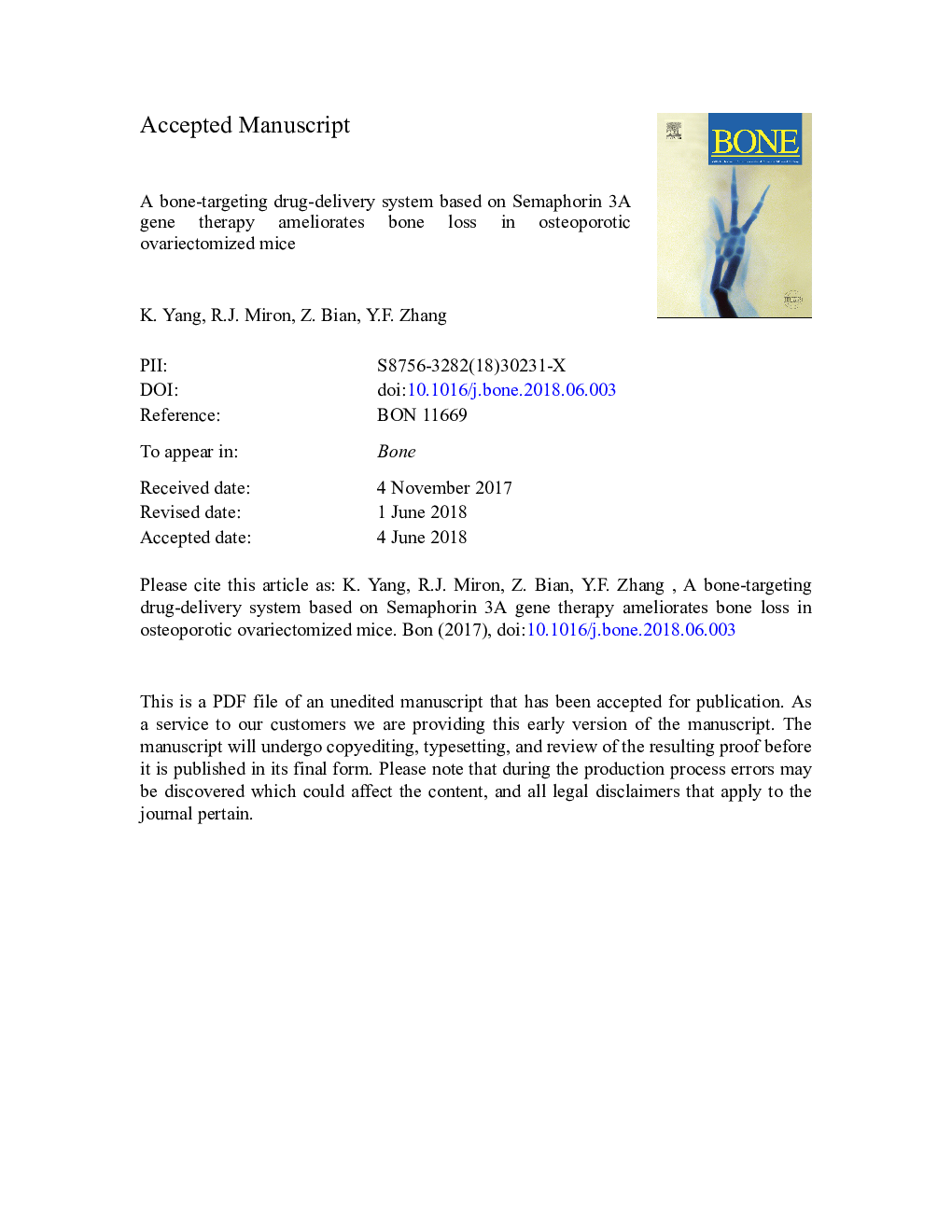| Article ID | Journal | Published Year | Pages | File Type |
|---|---|---|---|---|
| 8624777 | Bone | 2018 | 25 Pages |
Abstract
Osteoporosis is a serious health problem worldwide. Semaphorins (Sema) have been described as key molecules involved in the cross-talk between bone cells (osteoblasts/osteoclasts). In this study, we investigated whether plasmid containing Sema3a could ameliorate bone loss in an ovariectomized (OVX) mouse model via (AspSerSer)6, a selectively bone-targeting moiety. Plasmid pcDNA3.1(+)-Sema3a-GFP was fabricated and transfected cells with the plasmid demonstrated statistically higher levels of Sema3A in vitro (pâ¯<â¯0.001). Mice were ovariectomized and injected twice weekly with (AspSerSer)6-(STR-R8)+pcDNA3.1(+)-Sema3a-GFP for four weeks. The aim of the study was twofold: firstly to design an effective bone-targeting drug-delivery system (AspSerSer)6. Secondly, the effects of Sem3A gene therapy on bone loss was investigated. Here, the targeting selectivity of pcDNA3.1(+)-Sema3a-GFP via (AspSerSer)6 to the trabecular bone surface was firstly verified by histological observation of frozen sections and immunofluorescence staining. Then, bone microstructure analysis by Micro-CT indicated significantly less bone loss in mice treated with (AspSerSer)6-(STR-R8)+pcDNA3.1(+)-Sema3a-GFP compared to the control group (pâ¯<â¯0.05). Furthermore,H&E staining and Safranin O staining of the decalcified sections demonstrated statistically significantly higher bone area/total area in the mice that were injected with (AspSerSer)6-(STR-R8)+pcDNA3.1(+)-Sema3a-GFP (pâ¯<â¯0.001, pâ¯<â¯0.01,respectively). TRAP staining and immunohistochemistry staining of COL I demonstrated lower numbers of osteoclasts and significantly increased numbers of osteoblasts in the bone-targeting moiety delivering pcDNA3.1(+)-Sema3a-GFP group, when compared to the control group (pâ¯<â¯0.01, pâ¯<â¯0.001,respectively). Together, our findings have identified that, (AspSerSer)6, a bone-targeting drug-delivery system based on semaphorin3A gene therapy, ameliorated bone loss in osteoporotic ovariectomized mice, by suppressing osteoclastic bone resorption and simultaneously increasing osteoblastic bone formation. Gene therapy by local site-specific Sema3A overexpression might be a potential new strategy for treating osteoporosis and bone defects.
Related Topics
Life Sciences
Biochemistry, Genetics and Molecular Biology
Developmental Biology
Authors
K. Yang, R.J. Miron, Z. Bian, Y.F. Zhang,
